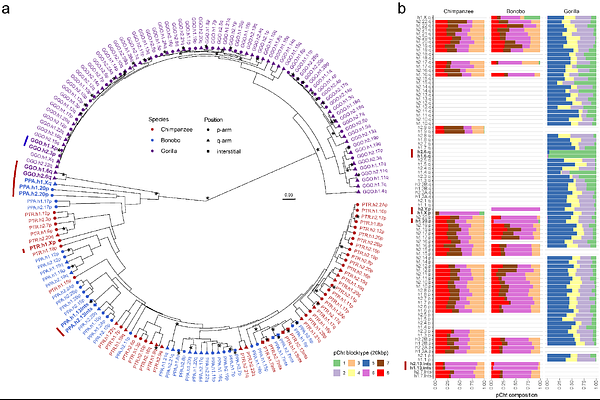Epigenetic and evolutionary features of ape subterminal heterochromatin

Epigenetic and evolutionary features of ape subterminal heterochromatin
Yoo, D.; Munson, K. M.; Eichler, E. E.
AbstractMany African great ape chromosomes possess large subterminal heterochromatic caps at their telomeres that are conspicuously absent from the human lineage. Leveraging the complete sequences of great ape genomes, we characterize the organization of subterminal caps and reconstruct the evolutionary history of these regions in chimpanzees and gorillas. Detailed analyses of the pCht satellite composition and associated segmental duplication (SD) spacers confirm two independent origins in the Pan and gorilla lineages. In chimpanzee and bonobo, we estimate these structures emerged ~7.5 million years ago (MYA) in contrast to gorilla where they expanded more recently ~5.1 MYA and now make up 8.5% of the total gorilla genome. In both lineages, the SD spacers punctuating the pCht heterochromatic satellite arrays correspond to pockets of hypomethylation, although in gorilla such regions are significantly more hypomethylated (p<2.2e-16) than chimpanzee or bonobo. Allelic pairs of subterminal caps show a high degree of sequence divergence (9-11%) with bonobo showing less divergent haplotypes and less hypomethylated spacers. In contrast, we identify virtually identical subterminal caps mapping to nonhomologous chromosomes within a species, suggesting ectopic recombination potentially mediated by SD spacers. We find that the transition regions from heterochromatic subterminal caps to euchromatin are enriched for structural variant insertions and lineage-specific duplicated genes. We suggest these regions are hotspots for accelerating ape genome evolution.